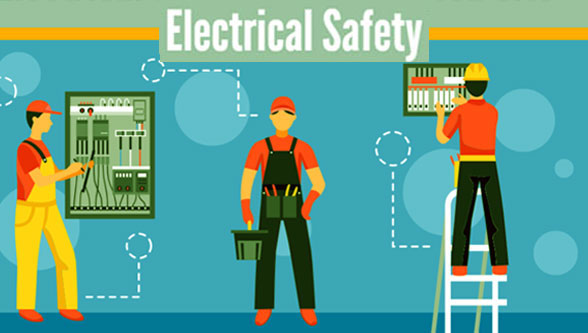If you’d like security with regards to security of your electrical system, it’s important to pay a professional to conduct an inspection.
A certificate of electrical safety provides the evidence needed to ensure that all issues in your home are fixed prior to they cause damage or injury. There’s no lawful requirement for the installation of electrical devices to be independent examined unless it is installed again, or has been substantially moved or altered or a work permit has been refused.
In all other circumstances the building regulations only require equipment to be inspected by an experienced person who need not be an electrician. However, they must know what they are doing.
A safety check for electrical installations usually involves testing the equipment to ensure that it’s compliant with building regulations, IEE Wiring Regulations and any instructions given by the manufacturer. Problems can include excess electrical cables, overloaded sockets or equipment that’s not functioning properly which could create a fire.

The certificate will also contain appliances that are part of the installation, including heaters, immersion heaters and kettles. These are therefore safe to use.
A test of electrical integrity is carried out by an experienced professional who will provide suggestions regarding how issues might be addressed before they cause the risk of injury or destruction.
If you lease your home, you may be entitled to request an electrical safety test under the conditions of your tenancy agreement.
Tips for safety in the electrical field in home renovations
The experts at the University recommend homeowners to take these steps while renovating.
1. Don’t remove the main switch or an isolated circuit breaker while someone is using power from another location in the house. This is the case for appliances connected to outlets controlled by the wall switch.
2. Before you start wiring start wiring, ensure that the light on the power indicator to dim after you have shut off the circuit breaker.
3. If you must shut off the circuit breaker that is isolated while you are using electrical equipment attached to it, shut off the electric power at the main switch prior to making use of wires controlled by the circuit breaker.
4. Utilize an extension cable to provide power. Make sure you use the shortest length that is possible and ensure that it’s not overloading. If you are using an extended cord for large-wattage appliances, make sure that it is UL-approved
5. Be aware when working with wiring devices that are older especially three-way switches. These switches haven’t been used for a number of years. If they’re not installed properly they could pose a danger of electrocution or shock.
6. Only use electrical fixtures that have been tested according to Australian standards like the ones made by Wylex, Schneider Electric, or HPM.
7. Keep lighted candles away from the combustible substances. Don’t leave the candles alone.
8. The best shoes to wear are those with rubber soles, because they can be worn on dry ground. Don’t use damaged extension cables. If your appliances are equipped with similar voltage ratings, do not cut off the cord , and plug it in to a more modern one.
If you want to learn more, click smoke alarm test certificate
Leave a Reply